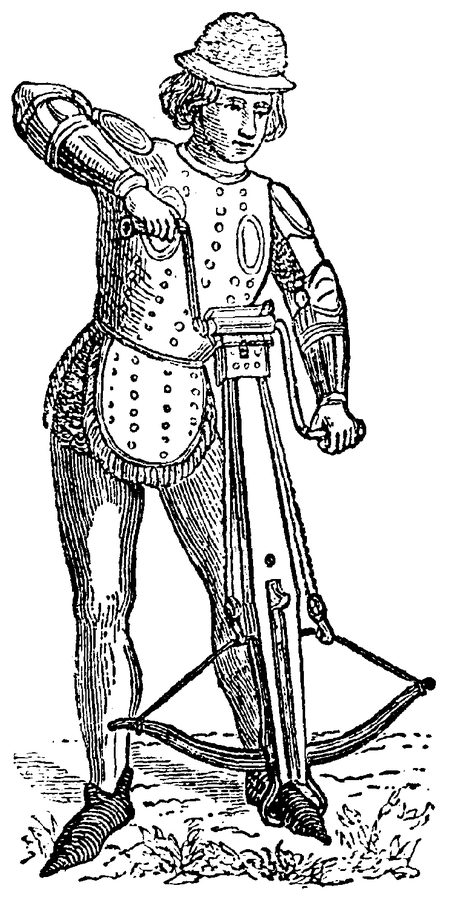In medieval times it was common for aristocrats to employ boys as young as seven in their households. These were often the sons of other nobles, and the practice of passing one’s son on to a neighbouring lord would be a means of establishing friendly relationships or maybe of discharging a debt.
The boys would work as “pages”, doing menial jobs within the household, but would also be treated well and be given education and military training, including being taught to ride a horse.
One aspect of the military training would be learning to use weapons, but there would be limits on what weapons boys could use, given that lances and longbows were large weapons that required considerable physical force to operate them. However, one weapon that a young boy could use was the crossbow.
Crossbows were operated by winding the “string” back with a handle, which needed far less physical effort than that involved in firing a longbow. Boy pages were therefore expected to be able to use a crossbow should an aristocrat’s castle come under siege. A child could thus be an effective killer without having to engage in hand-to-hand combat with an enemy.
Boy pages would also be expected to accompany their lord into battle, their main duties being to dress and arm their employer. Even if they did not use a crossbow in the field, they could assist the archers by winding the crossbows between shots.
Medieval military etiquette decreed that boy pages could not be targeted during a battle. This convention was ignored by the French side during the Bartle of Agincourt in 1415, a circumstance that so annoyed King Henry V that he absolved himself from another aspect of the military code and proceeded to slit the throats of his prisoners.




Thank you for taking the time to share these things.
Wow, they started working early back then.
ok I knew about pages but did not know the crossbow connection. As always, I learned something!
Don’t waste your time on a man/woman, who isn’t willing to waste their time on you
Đừng lãng phí thời gian với những người không có thời gian dành cho bạn